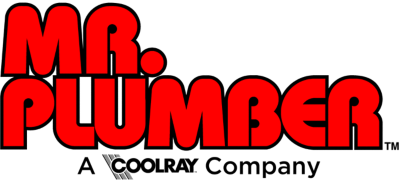What’s Worse Than Having No Hot Water? Having That Hot Water Flood Into Your Home Due To A Water Heater Bursting.

Imagine if nasty raw sewage started backing up into your home through all your plumbing drains.
Well, that’s what happens when you have a main sewer line backup.
A sewer line backup is not only unhealthy, but difficult and expensive to repair. And your home insurance may not help you pay for damages, either.
According to Western National Insurance, “Most homeowner and business insurance policies do not cover sewer backup unless specific sewer backup coverage is added to the policy.”
Here’s how to keep this unsanitary problem at bay.
1) Flush only “the essentials” down your toilet
Human waste and toilet paper—those are the only 2 things you should flush down a toilet.
Almost anything else, including “flushable wipes,” has the potential to clog your sewer line.
Yes, you read that right: flushable wipes aren’t very flushable after all, according to Consumer Reports.
Learn more: 7 Things You Should Stop Flushing Down Your Toilet.
2) Don’t dump grease down the drain
As grease cools down, it solidifies. If enough of it solidifies in the main sewer line, you’ll eventually get a clog. So, after cooking, DON’T pour the grease and oil down the kitchen drain.
What to do instead: Pour the grease into a heat-resistant container and throw it away or reuse the grease later.
Related: 5 Food Items You Should Never Put Down Your Garbage Disposal
3) Don’t plant trees over the sewer line
A common cause of sewer line backups are tree roots invading the sewer line. Tree roots love your sewer line because it contains water and nutrients—things roots love.
So, if you’re planting any new trees, make sure they’re at least 10 feet away from the sewer line. That way it takes longer for the roots to reach the sewer line.
To find the sewer line, look for a sewer clean out cap. These are typically either white PVC or Black ABS pipes sticking out of the ground or sometimes in a recessed box in the lawn.
One should be within a few feet of your foundation wall and the other should be within 13 feet of the curb. In most cases the pipe will travel underground this general line of sight.

Learn more: How to Keep Tree Roots From Wrecking Your Sewer Line
4) Be proactive
Your sewer line may already be partially clogged with tree roots, grease and items you shouldn’t flush down the toilet.
To prevent a total clog, you’d want to get the plumbing cleared ASAP.
But how do you know if your sewer line actually clean clearing?
Well, Mr. Plumber, our plumbing division, can do a video inspection of your sewer line to see if there are any problems and clear it up if needed.
Need help in the Atlanta area?
Got questions about sewer line repair, inspections and cleaning? We have answers. Ask our experts for help (it’s free).
Related Reading
Subscribe To Our Newsletter
Get up-to-date current news, promotions, and industry tips.
